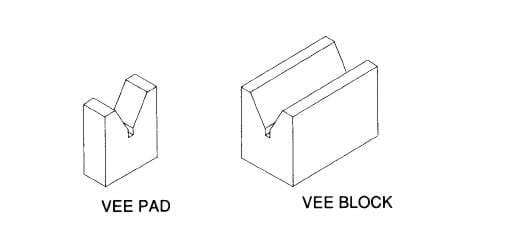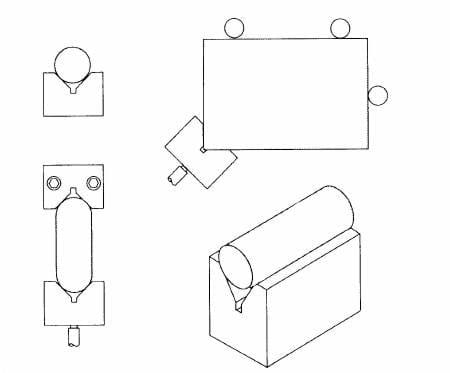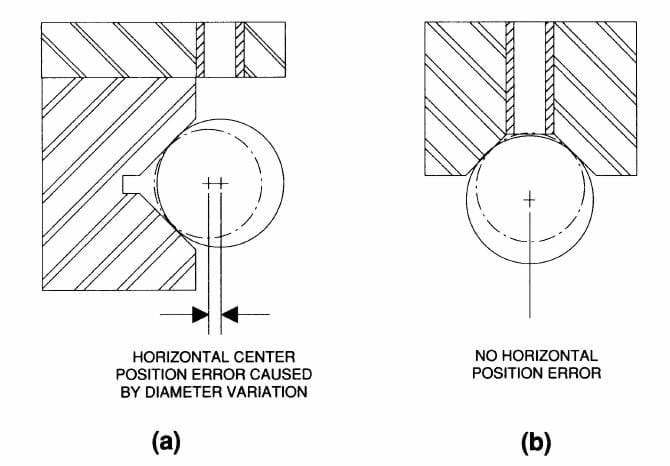Vee locators are a specialized form of locating element. They are used mainly for round or cylindrical workpieces. The two basic styles of vee locators are the vee pad and the vee block, Figure 7-18.
Vee locators have many applications, as shown in Figure 7-19. The vee accurately locates and centralizes a round workpiece, or a workpiece with radiused ends. Vee pads are well suited for corner mounting a square or rectangular workpiece. The corner selected for the location should be a machined right angle to ensure accuracy. Vee blocks, readily available up to 18” long, are used mainly for cylindrical shafts or bars.
 Figure 7-18. Vee pads and vee blocks are two basic styles of vee locators.
Figure 7-18. Vee pads and vee blocks are two basic styles of vee locators.
 Figure 7-19. Vee locators can be used to locate a variety of part shapes.
Figure 7-19. Vee locators can be used to locate a variety of part shapes.
The normal angle of vee-type locators is 90º, for stable and consistent location. The angle may be changed, however, when a larger capacity vee is needed in an area with limited space. A vee with a 120º angle increases the diameter capacity without greatly increasing overall size, Figure 7-20.
 Figure 7-20. Vee locators can be used to locate a variety of part shapes.
Figure 7-20. Vee locators can be used to locate a variety of part shapes.
Vee locators centrally locate the workpiece within the locator. This can result in a locational problem if the vee
locator is not properly oriented, as shown in Figure 7-21.
 Figure 7-21. Vee locators can be used to locate a variety of part shapes.
Figure 7-21. Vee locators can be used to locate a variety of part shapes.
Always position the vee locator to minimize the effect of the workpiece’s diameter on the accuracy of the machining operation. As shown at (a), if the vee locator were placed on either side of the workpiece, diameter variations, even within allowable tolerances, could shift the workpiece and cause misalignment of its center. If, however, the vee locator is positioned on the top or bottom of the workpiece, as shown at (b), workpiece size variation has no effect on the relative position of the workpiece with regard to the cutting tool.